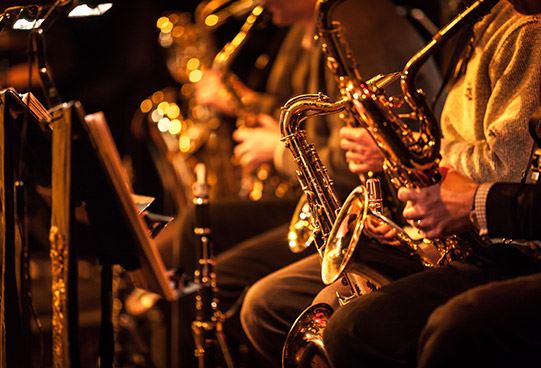
Saxophone Lessons in Dallas, TX
Invented by Adolphe Sax in 1846, the saxophone has been heard all over the world, from military bands in the 19th century to jazz ensembles throughout the 20th century. While the saxophone is a complicated machine of an instrument, and it presents a number of unique challenges to the new player, it is one of the most beautiful and rewarding instruments to play in the world. A French composer who lived during Sax’s time named Louis Hector Berlioz once wrote that its “principle merit…is the varied beauty of its accent, sometimes serious, sometimes calm, sometimes impassioned, dreamy or melancholic…like the mysterious vibrations of a bell, long after it has been struck…”

The primary challenge of playing a saxophone well is in that there are many variables that can affect the sound that a sax player produces. Like other woodwind instruments, the sax has a mouthpiece that is attached to a reed with a ligature. As a result, the reed’s age, installation, moisture, and hardness affects the sound, as does the environment’s heat and humidity, which changes the shape of the saxophone body. This is without taking into account the two skills the player must develop to be an effective sax player: playing the reed with his/her lips and playing the keys with his/her fingers. However, these factors can all be understood and maneuvered with time and patience.

Why Choose Promethean Studios?
-
99.9% of students can learn to play or sing better than they ever imagined. That’s you, buddy.
-
We teach complete beginners through studio professionals so there’s never a limit to your learning potential.
-
You’ll save years of wasted effort because we’ll identify & solve key errors in your technique as you develop essential skills.
-
Over 5000 students from around the world have taken the finest private lessons in the world right here.
-
All lessons are customized to your goals, your music, your abilities, and your personality – how YOU learn.
-
Your instructor is one of the nation’s top private music educators and musicians.
-
You get to play or sing the music you love while you develop skills.
-
You can learn online, in the studio, or in a band.
-
You’ll love your lessons and have a blast while you learn.
-
 FAQs
FAQsWe answer common questions students and parents have about music and our studio.
-
 Music Seminars
Music SeminarsWe give students access to decades of experience and knowledge from lifelong musicians.
-
 Discounts and Gift Certificates
Discounts and Gift CertificatesWe help new players get started by offering coupons, discounts, and gift certificates.


